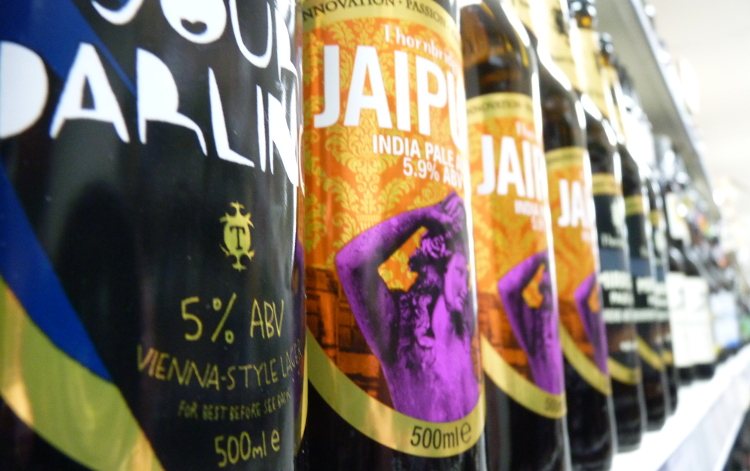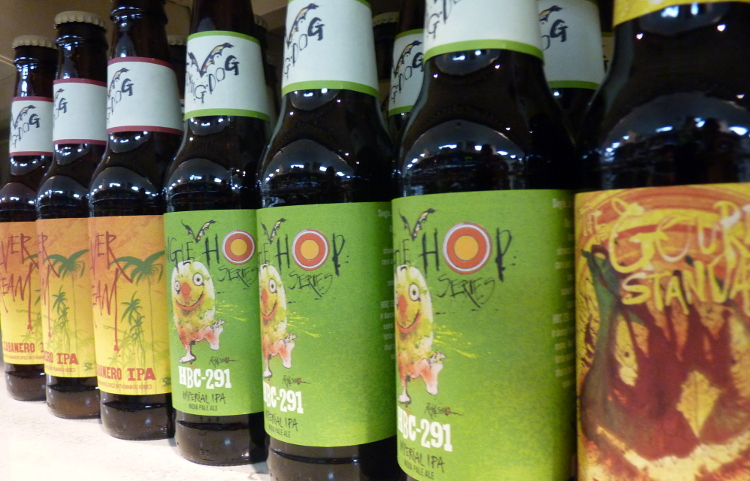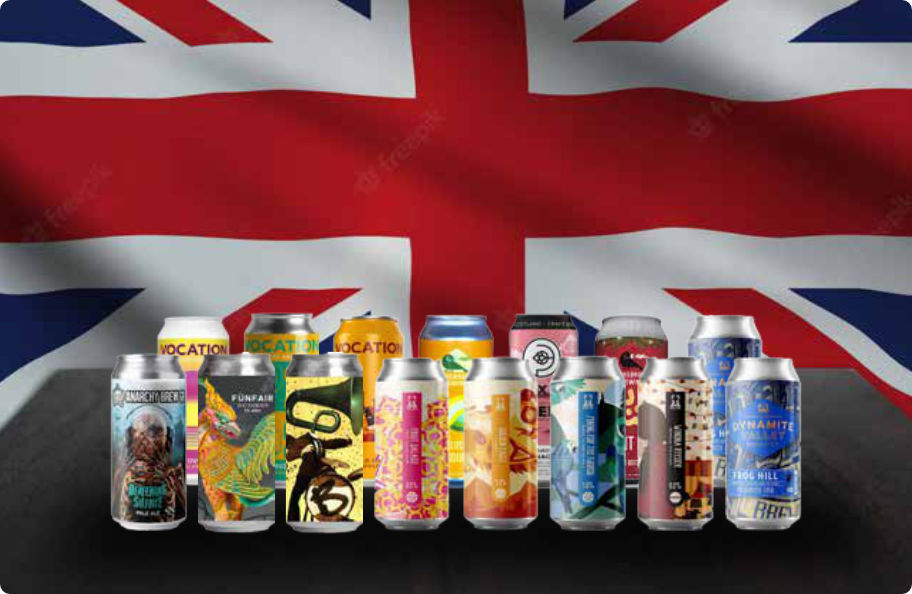Guides and Facts
IPA Beer Classification Guide | Encyclobeeria Part 4
Originally Posted on Jun 17, 2016
Welcome to Beers of Europe’s Beer Classification Guide. In this series we walk you through different beer styles, opening your eyes to the origins of the type and how it has developed over the course of its history. For the home brewers amongst you, we include the brewing specifications for the style and food pairings, as well as what makes it different from others. Finally, we give you the best examples of the type that you can buy straight from our website. The last style covered was the evolution of the pilsner, from its origins to the best modern examples. This week we turn away from the continent and focus on a British classic, the IPA.
ORIGIN AND HISTORY
The concept behind the creation of the Indian Pale Ale comes from India (just in case you had doubts) at a time it was a colony of the British Empire, around the end of the 18th century. The only beer being imported for the troops at this stage was porter, as it was popular in London where the ships departed for India. The trip took up to six months to complete and the beer, if it remained intact, suffered greatly in the heat
Hodgson was thought to be experimenting with different variations to try and get a brew that suited the long journey and was protected from the heat. Whether by pure chance or skill, he created a batch of strong, fiercely hopped originally called October Ale that would go on to become the India Pale Ale. The science behind the creation is that the brew was packed with hops that contained preservatives to prevent the brew from becoming contaminated. The high alcohol content helped the brew mature in the cask while it was being transported instead of becoming undrinkable due to the intense climate. Once poured on the other side, a much lighter colour than the typical porter, hoppier on the tongue and offering a much needed bout of antibiotics to the system to help the soldiers. It was an instant success.

Hodgson and Bow Brewery enjoyed many years of success until his retirement handed the brewery over to Frederick Hodgson and Thomas Drane in 1821. Greed drove the pair to raise the price and cut out the middlemen, shipping it themselves. Their domination of the industry had been due to the lack of competition, until Burton Brewery’s Samuel Allsopp was called upon to create a challenge to the Bow brewery. Russia’s new tax on English Imports had hit Allsopp’s brewery hard as they had exported porters and stouts to suit the Russian climate up to that point. Allsopp was convinced that India could become an even more successful network than Russia and brewed to recreate Hodgson’s October Beer with barley so light he dubbed it White Malt, so when brewed it was as pale an ale as he had seen. Unknown to Samuel Allsopp, Burton’s water source is rich in calcium sulphate, which produces naturally better bitter ale than London’s, which is rich in calcium carbonate, suitable for porters. (A bit of quiz worthy information there!). Allsopp’s brew went down superbly, although he could not keep the success secret and big Burton brewers Bass and Salt entered the market to eventually subdue the demand. Wars meant barley was needed for food
History lesson over, a revival of the style was coordinated in the 1970’s, not by England, but by the United States. Their ever increasing development of the craft scene included brewing older British styles. The American IPA has played a massive part in getting America its deserved recognition for brewing; shrugging off the bad reputation it has had for only producing Budweiser and other commercial drinks with no taste. They brought the style back using their own hops and malts to give real depth to the US market. Breweries like DogFish Head are famed for their take on the IPA
Our story ends with the British picking the style back up and taking it back to where it all began. In the last 10-15 years, the IPA has come back out from obscurity to a point that you will not find a pub that doesn’t stock one. It has become the flagship brew for many breweries and is a worldwide hit once again.
SPECIFICATION
The brewing stats for the India Pale Ale often vary as there are multiple sub-styles including the English IPA, the American IPA and an Imperial IPA. Here you can see the differences between all three.
| Comparing India Pale Ales | American IPA | English IPA | Imperial IPA |
| ABV | 6%-7.5% | 5%-7% | 7.5%-10.5% |
| IBU | 50-70 | 35-65 | 65-100 |
| Colour | Gold-Copper | Gold-Copper | Gold-Light Brown |
| Hops | Amarillo, Centennial | Warrior, Chinook | Various |
| Malts | American Two-Row | British Pale Ale | Crystal, Malted Wheat |
| Tasting notes | Both floral and citrus qualities add to the hop flavour and aroma. Alcohol is apparent with a high carbonation and medium bitterness. | The hops are often very noticeable, with a flowery aroma. The original strength in the bitterness is retained. Normally clear in appearance. | Hop flavour is high and lively but is not too intense. Malt input is medium to high and clarity can be hazy. It is full bodied with a long finish. |
| Glass | Tulip | Nonic | Tulip |
| Serving Temperature | 10-12⁰C | 8-10⁰C | 10-12⁰C |
| Food Pairings | Tuna, Blue Cheese | Pasta, Cheddar | Various Meat Dishes |
RECOMMENDATIONS
The sub-styles all have very good examples in store, which are a credit to the IPA. Starting with the English IPA, one of the best examples is the Jaipur IPA, courtesy of Thornbridge Brewery. It contains an ABV of 5.9%, perfect for an English IPA, and uses Warrior, Chinook and Centennial hops to create a hoppy and floral taste that has won awards worldwide for its long, bitter finish. It uses Maris Otter malt to create a golden and clear appearance. One of our most popular brews in store, it boasts a 94 rating on Ratebeer and is named after its namesake city, which is the capital of the Indian state of Rajasthan.

An excellent example of an imperial IPA arrives from across the pond in the shape of Flying Dog Imperial IPA HBC291 Single Hop. This is a new hop, developed in 2016, that compliments all beer styles, which is displayed in its use here and in Belgian brewers Duvel Tripel Hop. The hop brings through a taste of lemon and lime with hints of pepper. This settles well with Rye, Biscuit and Cara-Pils malts to create a brew that boasts 8% ABV, and has an IBU of 75, perfect for an Imperial IPA.
Swapping the East Coast for the West, Anchor Brewing produces a couple of stunning American IPAs. Focusing solely on their 2016 brew Anchor Go West! IPA, it weighs in at 6.7% ABV and is dry hopped using four different hops; Citra, Equinox, Calypso and Eureka to induce a bitter taste, followed by the sweet pale malt and ending with a smooth yet complex finish. This American IPA is inspired by the Californian Gold Rush and the opportunistic emigration from the original colonies in search of fortune.
CONCLUSION
The IPA has survived the journey across the oceans to India, survived near extinction in the 20th century and has been the centre of an American revolution that has propelled the IPA to worldwide fame once again. The style shows no signs of slowing down and new techniques, ingredients and the passion of the brewers who dedicate time to their creations will ensure that the IPA carries on strong.
The next beer style entry will be British classics, the stout and porter.
Article by Matthew Keeley-Smith




